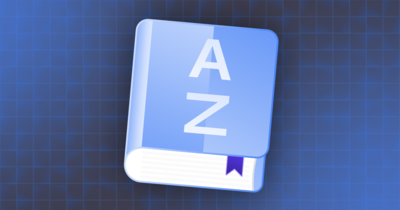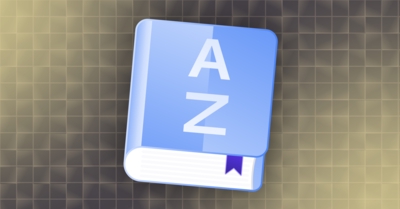With the explosion of SaaS apps, the protection of sensitive data and secure access management are paramount concerns for organizations across industries. Two critical components of this security equation are Identity Governance and Administration (IGA) and Privileged Access Management (PAM). While these security best practices are closely related, understanding their distinct roles and applications is crucial to building robust security programs.
What is IGA?
Identity Governance and Administration (IGA) is a comprehensive framework and set of processes used by organizations to manage user identities and their access rights to critical infrastructure. The main goal of implementing IGA solutions is to ensure that the right people have the right level of access to the right resources at the right time while also addressing compliance and security requirements.
Key aspects of IGA:
- User Lifecycle Management: manage the entire lifecycle of user identities within an organization, from initial onboarding to role changes, access requests, and offboarding.
- Access Governance: use configurations for defining and enforcing access policies and controls.
- Access Requests: route user access requests to specific resources or systems through approval workflows to ensure that appropriate access is granted only when needed.
- Compliance: demonstrate compliance with various regulatory requirements, industry standards, and internal policies by ensuring that access controls are in place and effective.
- Reporting and Auditing: provide reporting and auditing capabilities that allow organizations to track and monitor user accounts and access-related activities.
- Provisioning and Deprovisioning: integrate with identity and access management (IAM) tools, HR systems, and other enterprise applications to streamline user provisioning and deprovisioning processes.
- Security: contribute to overall security by reducing the risk of unauthorized access and ensuring that access permissions align with security policies.
In summary, IGA is a holistic approach to managing user identities and their access privileges in organizations. It plays a crucial role in ensuring that entitlements are well controlled, compliant with regulations, and aligned with business needs, contributing to both security posture and efficiency within an organization.
What is PAM?
Privileged Access Management (PAM) is a set of cybersecurity practices and technologies designed to control and monitor access to privileged accounts, also known as superuser or administrator accounts, within an organization’s IT environment. Privileged accounts have elevated permissions and access to critical systems, making them frequent targets for cyberattacks. PAM solutions help organizations secure, manage, and audit the use of these privileged accounts to prevent unauthorized access and reduce the risk of cyber threats.
Key aspects of PAM:
- Just-in-Time Access: grant temporary, time-limited access to privileged accounts only when needed. Through automation, just-in-time access is provided based on specific requests and approvals, reducing the exposure of privileged credentials.
- Privileged Account Protection: protect privileged users and accounts, including those used by system administrators, IT staff, and third-party vendors, from unauthorized access through features like password vaulting and session monitoring.
- Access Control: enforce strict access controls for privileged accounts that ensure that only authorized individuals or systems can access these accounts, reducing the risk of insider threats or external attacks.
- Principle of Least Privilege (PoLP): enforce the principle of least privilege, giving users the minimum level of access required to perform their tasks to reduce the risk of excessive permissions and misuse.
- Multi-Factor Authentication (MFA): include the use of multi-factor authentication for accessing privileged accounts, adding an extra layer of security beyond passwords.
- Compliance and Reporting: provide reporting and auditing capabilities to demonstrate compliance with security regulations and internal policies. Auditing user privilege through access reviews helps organizations track and investigate suspicious activities.
PAM is a critical component of cybersecurity that focuses on securing, controlling, and monitoring access to privileged accounts and systems. Ensuring the integrity and security of IT environments, PAM helps organizations mitigate the risks associated with unauthorized access to critical assets.
How are IGA and PAM different?
The primary difference between IGA and PAM lies in their focus and scope. IGA is concerned with managing the identities and access of regular users across the organization, emphasizing compliance, access governance, and identity lifecycle management. PAM, on the other hand, is narrowly focused on securing and managing privileged accounts and access to critical systems, with a primary goal of preventing security breaches and misuse of high-level privileges.
Because IGA manages access for regular users and PAM ensures the security of privileged accounts, the two collectively contribute to enhanced cybersecurity. In many organizations, IGA and PAM are used in tandem to create a comprehensive identity access management strategy.
Why implement both IGA and PAM?
Using both IGA and PAM in your company provides a comprehensive approach to identity security and access management while enhancing compliance and overall operational efficiency. Since IGA focuses on managing user identities and their access so they have the right access when they need it and PAM focuses more on securing and managing privileged accounts and access to critical infrastructure, implementing both means complete coverage of identity and access management.
IGA and PAM also play complementary roles in compliance and security. IGA ensures that access rights align with compliance requirements and internal policies for all users while PAM provides the essential auditing and reporting capabilities to demonstrate compliance with regard to privileged access. Using both IGA and PAM means you are staying secure with access management, access controls, session monitoring, and just-in-time access, which reduces the risk of unauthorized access and data breaches.
Summary
Reinforce the principle of least privilege and stay secure and compliant with the security best practices of Identity Governance and Administration (IGA) and Privileged Access Management (PAM). IGA is a framework used by companies to manage user identities and their access rights to critical infrastructure, while PAM is a set of cybersecurity practices that control and monitor access to privileged accounts within an organization’s IT environment.
IGA and PAM are complementary solutions that address different aspects of identity and access management. By implementing both, you create a well-rounded security strategy that covers the diverse access needs of your organization, from regular users to privileged accounts, enhancing security, compliance, and operational efficiency.
Get the guide → Best Practices for Privileged Access Management (PAM) for the Cloud


